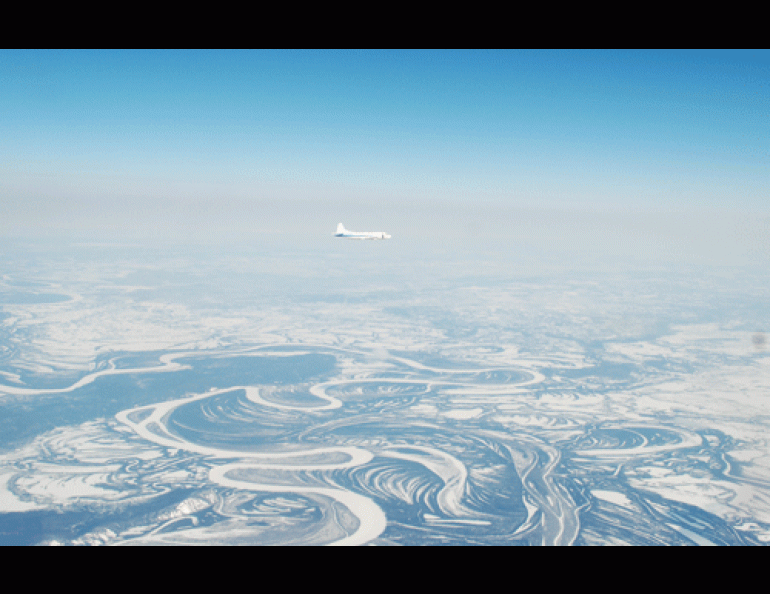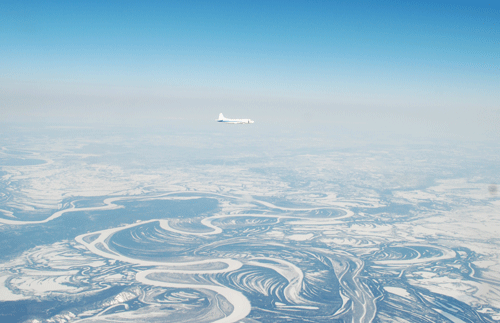
Arctic haze on the wane
Arctic haze, a blob of dirty air that fuzzes up Alaska views in springtime, seems to be losing its punch.
By comparing air measurements in Barrow from the 1970s to 2008, scientists have found that pollution particles from factories in Russia and Eurasia have become fewer and fewer in the last 30 years.
“The Arctic haze is disappearing,” said Glenn Shaw, who did pioneering research on the phenomenon and is the co-author on a recent paper about its decrease. “We don’t know why.”
Shaw, a professor emeritus at the University of Alaska Fairbanks’ Geophysical Institute, has in years past stopped passersby to point out how Arctic haze—pollution particles in the air that scatter light—has “obliterated” views of the Alaska Range in springtime. In recent years, he has noticed that the vistas have been much clearer from Fairbanks, and instrumentation in Barrow seems to back that up.
“There’s less of the industrial signal, of what’s typically been known as Arctic haze,” said Patricia Quinn, a research chemist with the National Oceanic and Atmospheric Administration’s Pacific Marine Environmental Laboratory in Seattle and the lead author of the study, which appeared in the Nov. 23, 2009 issue of the journal Atmospheric Chemistry and Physics.
First named by an Air Force pilot in the 1950s, Arctic haze appears in the north from about January until early May, when a more active atmosphere flushes and dilutes what Shaw once called an Africa-size amoeba of dirty air that sloshes over the top of the globe. The decrease in that sort of pollution may be due to less smelting of heavy metals in Russia and improved emission technology.
“I personally think they’re pumping less junk into the atmosphere,” Shaw said. “Things have changed.”
“I think emissions have dropped in Europe just because we’ve been cleaning up,” Quinn said. “And when the Soviet Union collapsed, their productivity dropped, and so did everything that was emitting these pollutants.”
Weather could also be a factor, the researchers wrote. The weakening of the Siberian High during the last 25 years might be idling the pump that pushed pollutants northward to the Arctic.
Though the industrial portion of Arctic haze may be on the wane, researchers found surprising levels of soot from the burning of wheat stubble and boreal forest when they sampled the air over Alaska on a spring mission in 2008. Scientists hadn’t found that smoky signal in the Arctic haze sampled in the 1970s.
And, though springtime emissions of industrial pollution have decreased at Barrow, during the last decade of summers, the air sensors at Barrow have sniffed more sulfuric compounds in the air. These are probably the emissions of billions of little creatures in the ocean known as phytoplankton.
“It could be because of more open ice, or because warmer air and sea-surface temperatures are enhancing biological activity,” Quinn said.
The scientists didn’t write much about the increased sulfur compounds in the summer air of Barrow because it wasn’t their main focus, but Quinn found the enhanced atmosphere there interesting. The tiny sea creatures could, in theory, help reflect the rays of the sun.
“It could make clouds brighter,” she said. “It could make things cooler, which would be good.”





